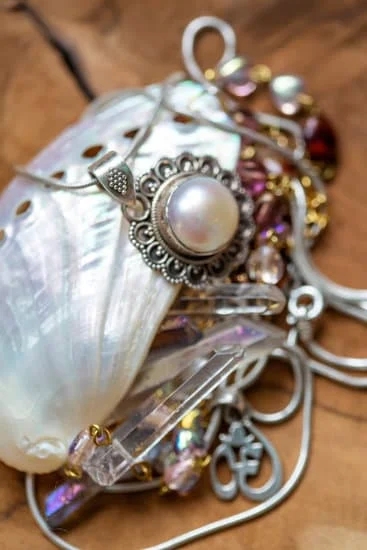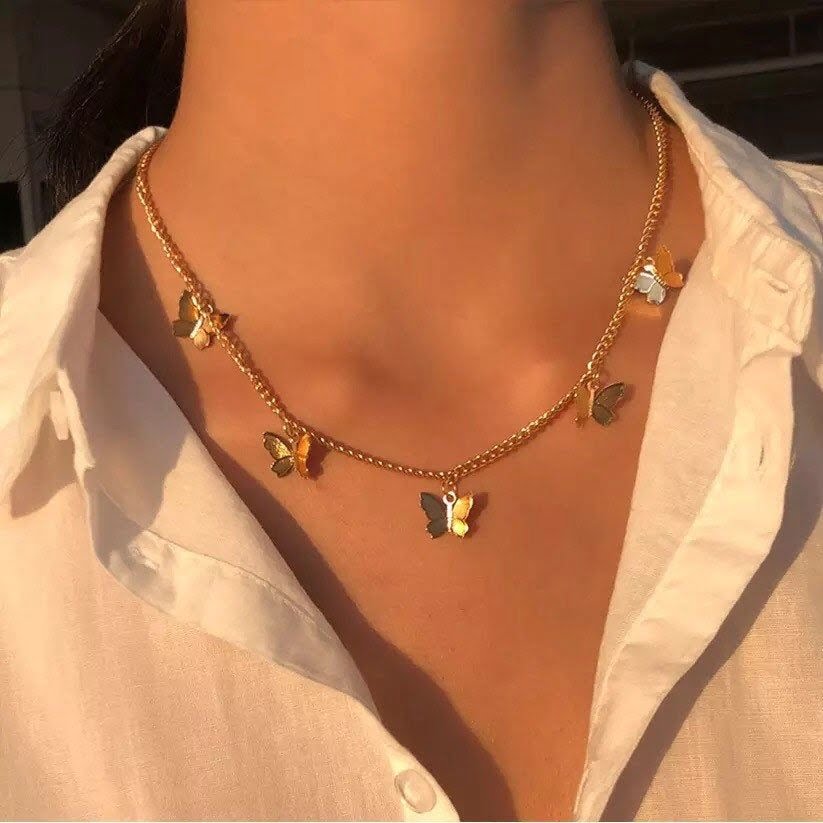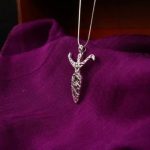The history of rhinestone jewelry is a captivating journey that spans centuries, from its origins as natural crystals to its modern-day evolution in the fashion world. From the Renaissance and Baroque era to the influence of Hollywood in the Golden Age of Cinema, rhinestone jewelry has made an indelible mark on both the past and present. This article delves into the rich and intricate history of rhinestone jewelry, exploring its origins, cultural significance, and continued relevance in contemporary fashion.
Rhinestones, once natural crystals found along the Rhine River in Europe, have undergone a remarkable transformation into dazzling man-made gems. The allure of these shimmering stones has not waned over time, fascinating people around the world with their timeless beauty and elegance. Throughout history, rhinestone jewelry has been synonymous with luxury, opulence, and glamour, adorning royalty, celebrities, and fashion icons alike.
From its early beginnings to its current presence in popular culture and high fashion runways, rhinestone jewelry has undoubtedly left an indelible mark on the world of accessories. Join us as we embark on a journey through time to unravel the fascinating history of rhinestone jewelry – a story filled with innovation, creativity, and enduring allure.
The Origins of Rhinestones
The origins of rhinestone jewelry can be traced back to natural crystals that were initially used by ancient civilizations for decorative purposes. These natural crystals, such as rock crystal, quartz, and garnet, were popular choices for adorning jewelry due to their shimmering and reflective qualities. However, it wasn’t until the 18th century that the concept of “rhinestones” as we now know them emerged.
In the 18th century, a new method of faceting glass was developed in the Rhine Valley, which resulted in the creation of highly refractive glass that resembled gemstones. These faceted glass materials soon gained popularity and became known as “Rhinestones,” derived from the Rhine River where they were first produced. This marked a significant turning point in the history of rhinestone jewelry, as it allowed for the mass production of affordable yet visually stunning gem imitations.
As technology continued to advance, man-made gems like cubic zirconia and crystal glass further revolutionized the production of rhinestones. These materials offered an even closer resemblance to real gemstones while remaining cost-effective. The accessibility and affordability of rhinestones led to their widespread use in jewelry-making and fashion accessories across various cultures and time periods.
To this day, the history of rhinestone jewelry continues to fascinate historians and enthusiasts alike due to its enduring legacy and impact on fashion and style throughout different eras. The evolution from natural crystals to man-made gems is a testament to human creativity and innovation in crafting beautiful adornments that have stood the test of time.
| History | Rhinestone Jewelry |
|---|---|
| Ancient civilizations | Decorative purposes |
| 18th century | New method faceting glass |
| Man-made gems | Evolution of Rhinestones |
Renaissance and Baroque Era
The Renaissance and Baroque Era marked a significant period in the history of rhinestone jewelry, as the popularity of these sparkling gems surged across Europe. During this time, rhinestones were initially known as “paste” and were made from glass or crystal. This era saw a rise in the use of rhinestones in jewelry, particularly among the upper class and royalty, who adorned themselves with exquisite pieces featuring these glittering stones.
Rhinestones in Royal Fashion
One of the key factors contributing to the rise of rhinestone jewelry during the Renaissance and Baroque Era was its association with royalty. Monarchs and noble families commissioned elaborate pieces of jewelry embellished with rhinestones, using them to signify their wealth and power. These stunning creations included tiaras, necklaces, brooches, and earrings, showcasing the beauty and allure of rhinestones in European high society.
Advancements in Rhinestone Production
During this era, there were significant advancements in the production of rhinestones, leading to the creation of more intricate and dazzling designs. Skilled artisans worked tirelessly to perfect the art of creating glass or crystal stones that closely resembled precious gems like diamonds and sapphires. These advancements allowed for more elaborate and luxurious rhinestone jewelry to be produced, further cementing its status as a symbol of opulence and elegance.
Symbolism in Rhinestone Jewelry
Rhinestone jewelry during the Renaissance and Baroque Era held symbolic significance beyond its aesthetic appeal. The sparkle and brilliance of these stones were often associated with notions of purity, beauty, and power.
Jewelry adorned with rhinestones served as a statement piece for individuals seeking to display their social status while also conveying messages through symbolism embedded within each piece. As such, rhinestone jewelry became an essential part of European fashion during this era, leaving an indelible mark on the history of jewelry design.
The Influence of Hollywood
During the Golden Age of Cinema, rhinestone jewelry experienced a surge in popularity and became closely associated with glamour, sophistication, and luxury. Hollywood stars adorned themselves with sparkling rhinestone accessories on and off the screen, cementing the gem’s status as a symbol of elegance and allure.
During this era, rhinestone jewelry was not only seen on movie screens but also became a staple accessory for red carpet events, premieres, and high society gatherings. Actresses such as Marilyn Monroe, Audrey Hepburn, and Elizabeth Taylor were among the many celebrities who famously embraced rhinestone jewelry, influencing fashion trends and inspiring millions of women around the world to emulate their glamorous style.
The influence of Hollywood in promoting rhinestone jewelry also extended to costume design within films. Costume designers utilized rhinestone-embellished pieces to add an extra layer of opulence to period dramas, musicals, and romantic comedies. These films further solidified rhinestones as a quintessential element of old Hollywood glamour.
In addition to its association with film stars and red carpet events, rhinestone jewelry also became increasingly accessible to the general public during this time. The affordability and versatility of rhinestones made it possible for individuals of varying economic backgrounds to incorporate a touch of sparkle into their wardrobes. This widespread popularity ensured that rhinestones remained a beloved choice for both formal occasions and everyday wear, carrying their legacy from the Golden Age of Cinema into modern fashion.
Mid-20th Century
During the mid-20th century, rhinestone jewelry experienced a significant surge in popularity within the world of fashion. This period marked a time of great innovation and creativity in the design and production of rhinestone jewelry, as well as a shift in perceptions of its value and appeal.
One of the key factors contributing to the popularization of rhinestone jewelry during this time was the rise of costume jewelry as a fashionable and affordable alternative to fine jewelry. As society became more casual and less bound by traditional standards of dress, there was a growing demand for glamorous yet accessible accessories, making rhinestone jewelry an ideal choice for those seeking to make a style statement without breaking the bank.
Furthermore, the mid-20th century saw the advent of new manufacturing techniques that made it possible to create rhinestones in a wide range of colors, sizes, and shapes. This allowed designers greater freedom in their creative expression, leading to an explosion of unique and eye-catching rhinestone jewelry designs that catered to diverse tastes and aesthetics.
As fashion trends evolved throughout the mid-20th century, so too did the role of rhinestone jewelry in accessorizing. From elegant evening wear to more casual day-to-day looks, rhinestone jewelry became a versatile staple in many women’s wardrobes, offering endless possibilities for adding sparkle and glamour to any outfit.
This era represented a turning point in the history of rhinestone jewelry, establishing its status as an indispensable accessory for those who sought to express their personal style with flair and sophistication.
Contemporary Trends
Rhinestone jewelry has a rich and captivating history that dates back centuries. From its origins as natural crystals to its evolution into man-made gems, the allure of rhinestones has endured throughout the ages. In contemporary times, rhinestone jewelry continues to captivate the fashion world with its timeless glamour and versatility.
Contemporary Trends in Rhinestone Jewelry:
- Inclusion in High Fashion: Rhinestones have continued to make their mark on high fashion runways, with top designers incorporating them into their collections. From sparkling chokers to dazzling statement earrings, rhinestone jewelry adds a touch of elegance and luxury to any ensemble.
- Bridal and Special Occasion Wear: The popularity of rhinestone jewelry for weddings and special occasions is undeniable. Brides often opt for stunning rhinestone-studded tiaras, necklaces, and bracelets to add a touch of sparkle to their bridal looks. Additionally, rhinestone accessories are a popular choice for proms, galas, and other formal events.
- Everyday Glamour: Rhinestone jewelry is not just reserved for special occasions; it has also become a staple in everyday fashion. From subtle stud earrings to eye-catching rings, individuals are incorporating rhinestone jewelry into their daily wardrobe as a way to add a touch of glamour to their look.
As contemporary fashion continues to evolve, it is clear that the allure of rhinestone jewelry shows no signs of fading. With its ability to elevate and enhance any outfit, it remains an enduring trend in the fashion world.
In celebration of the history of rhinestone jewelry, we continue to see how this classic accessory has maintained its appeal across different eras and remains relevant today. Whether it’s adorning the red carpet or adding sparkle to everyday wear, rhinestone jewelry continues to capture our imagination with its timeless beauty and versatility.
Rhinestone Jewelry in Pop Culture
The history of rhinestone jewelry is closely intertwined with popular culture, as it has been worn and celebrated by various icons and has been featured in defining moments throughout the years. One of the most iconic moments that solidified the status of rhinestone jewelry in pop culture was Marilyn Monroe’s performance of “Diamonds Are a Girl’s Best Friend” in the film Gentlemen Prefer Blondes.
Her dazzling rhinestone jewelry, including statement necklaces and sparkling earrings, became synonymous with glamour and sophistication, leaving a lasting impact on fashion and popular culture.
Another significant moment that defined the legacy of rhinestone jewelry in pop culture was Elvis Presley’s extravagant stage costumes adorned with shimmering rhinestones. The King of Rock and Roll’s bold and flamboyant style brought rhinestone-studded jumpsuits into the spotlight, solidifying their place as a symbol of showmanship and extravagance in music history. His influence on fashion was unparalleled, and his fondness for rhinestone jewelry continues to inspire contemporary trends.
In more recent times, celebrities such as Beyoncé, Rihanna, and Lady Gaga have embraced rhinestone jewelry as an essential element of their stage outfits, red carpet looks, and music videos. Their fearless use of elaborate rhinestone-encrusted accessories has sparked new interest in this style of jewelry, reaffirming its place in modern pop culture.
Rhinestone jewelry continues to be celebrated for its ability to make a bold statement and add a touch of glamour to any outfit, proving that its legacy in pop culture is far from over.
The Future of Rhinestone Jewelry
In conclusion, the history of rhinestone jewelry is a tale of innovation, glamour, and enduring appeal. From its humble origins as natural crystals to its transformation into man-made gems, rhinestones have had a significant impact on the world of fashion and pop culture. As we look towards the future of rhinestone jewelry in the 21st century, it’s clear that this sparkling adornment will continue to evolve and captivate fashion enthusiasts around the world.
With advancements in technology and design, the future of rhinestone jewelry holds endless possibilities. Innovations in manufacturing processes have led to more sustainable and affordable options, making rhinestone jewelry accessible to a wider audience. Additionally, contemporary designers are pushing the boundaries of creativity by incorporating rhinestones into avant-garde pieces that blur the line between fashion and art.
Despite its centuries-old history, rhinestone jewelry remains as relevant as ever in today’s fashion landscape. Its enduring popularity can be attributed to its ability to add instant glamour and sparkle to any ensemble. As we embrace the future of rhinestone jewelry, one thing is certain – this timeless adornment will continue to shine bright for years to come.
Frequently Asked Questions
When Were Rhinestones First Used in Jewelry?
Rhinestones were first used in jewelry in the 18th century when they were created to imitate diamonds and other gemstones. The original rhinestones were made from rock crystal, quartz, or glass.
How Can You Tell if Rhinestone Jewelry Is Vintage?
You can tell if rhinestone jewelry is vintage by examining the clasps, settings, and overall craftsmanship. Vintage rhinestone jewelry often has intricate designs and higher quality materials compared to modern pieces.
What Is the History of Gem Jewelry?
The history of gem jewelry dates back thousands of years to ancient civilizations like the Egyptians, Greeks, and Romans who valued gemstones for their symbolism, beauty, and perceived healing properties. Gemstone jewelry has been a part of human culture for centuries and continues to be highly prized today for its timeless allure.

Welcome to my jewelry blog! My name is Sarah and I am the owner of this blog.
I love making jewelry and sharing my creations with others.
So whether you’re someone who loves wearing jewelry yourself or simply enjoys learning about it, be sure to check out my blog for insightful posts on everything related to this exciting topic!





